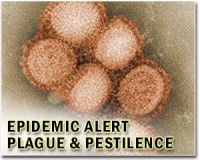| . |  |
. |
Washington (AFP) Nov 4, 2010 Tiny variants in a protein that alerts the body to infection could explain how one in 300 HIV-infected people are able to resist the onset of AIDS for years without needing any treatment, researchers said Thursday. "HIV is slowly revealing its secrets... Knowing how an effective immune response against HIV is generated is an important step toward replicating that response with a vaccine," said Bruce Walker, co-senior author of a study released Thursday. "We have a long way to go before translating this into a treatment for infected patients and a vaccine to prevent infection, but we are an important step closer," added the director of the Ragon Institute of Massachusetts General Hospital. For nearly 20 years, doctors have known that a small minority of HIV-infected individuals -- about one in 300 -- are naturally able to suppress viral replication with their immune system, keeping viral load at extremely low levels. "We found that, of the three billion nucleotides in the human genome, just a handful make the difference between those who can stay healthy in spite of HIV infection and those who, without treatment, will develop AIDS," said Walker. "Understanding where this difference occurs allows us to sharpen the focus of our efforts to ultimately harness the immune system to defend against HIV," he added in the study published in Friday's issue of Science magazine. Researchers led by Ragon Institute's Florencia Pereyra enrolled 3,500 individuals in clinics around the world, including 2,500 with progressive HIV infection and 1,000 controllers -- HIV infected people resistant to AIDS. Through a genome-wide association study, which tests variations at a million points in the human genome, the researchers identified some 300 sites that were statistically associated with immune control of HIV. The sites were all in regions of chromosome 6 that code for so-called HLA proteins. Without fully sequencing that genome region, which was unfeasible given the number of participants, the researchers developed a process that pinpointed specific amino acids that have a key role in viral control. Further testing linked differences in five amino acids in the HLA-B protein to viral control mechanisms. "Our work demonstrates that these variants could make a crucial difference in the individual's ability to control HIV by changing how HLA-B presents peptides from this virus to the immune system," said Walker.
Share This Article With Planet Earth
Related Links Epidemics on Earth - Bird Flu, HIV/AIDS, Ebola
 Plague came from China: scientists
Plague came from China: scientistsParis (AFP) Nov 1, 2010 The first outbreak of plague occurred in China more than 2,600 years ago before reaching Europe via Central Asia's "Silk Road" trade route, according to a study of the disease's DNA signature. The findings flesh out long-held suspicions about the Chinese origins of the plague, which killed an estimated third of Europe's population in the Middle Ages. An international team of scientists s ... read more |
|
| The content herein, unless otherwise known to be public domain, are Copyright 1995-2010 - SpaceDaily. AFP and UPI Wire Stories are copyright Agence France-Presse and United Press International. ESA Portal Reports are copyright European Space Agency. All NASA sourced material is public domain. Additional copyrights may apply in whole or part to other bona fide parties. Advertising does not imply endorsement,agreement or approval of any opinions, statements or information provided by SpaceDaily on any Web page published or hosted by SpaceDaily. Privacy Statement |